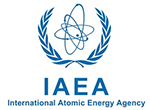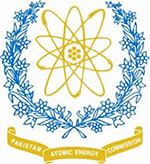|
Two days meeting of Nuclear Suppliers Group (NSG) in Vienna ended inconclusive on June 10, 2016 about India’s inclusion in the group. China has maintained its position that signing of Nuclear Non-Proliferation Treaty (NPT) is the cornerstone for safeguarding the international nuclear non-proliferation regime and India has not signed this treaty yet. It also iterated that there are many in the NSG favouring this point of view. The opposers of the Indian inclusion have also been arguing that if India is admitted, it must be under criteria that should be equally applicable to all states. South Africa, New Zealand and Turkey also resisted India’s inclusion but somehow they have softened their position as US is leading the Indian application. The India’s application is now expected to be discussed in meeting of NSG in Seoul on June 20. It is important to note that the NSG guidelines contain the “Non-Proliferation Principle”, whereby a supplier, notwithstanding other provisions in the NSG guidelines, authorises a transfer only when satisfied that the transfer would not contribute to the proliferation of nuclear weapons.
The Indian application for entry in NSG is the continuity of US-India civil nuclear deal and cooperation which started back in 2005. In 2008, US led NSG to agree upon granting India a special ‘waiver’ exempting it from rules of NSG governing civil nuclear trade. This was after a three decade long embargo on India about nuclear trade which was imposed after its nuclear explosion in 1974 at Pokhran. The support of world leading powers for special waiver to India was also due to the fact that they had their own interests to make nuclear deals with India and after the waiver, France, Russia, UK, Canada and other countries made such deals. The waiver made by NSG has allowed India to expand its fissile material stock exponentially and Pakistan has raised concerns over the matter. Also it has impacted the power balance and arms control in South Asia. Pakistan has stated that if by discrimination, India is enabled to join the NSG, this would initiate a never ending nuclear race in South Asia. US Senator Ed Markey rightly stated that, “What you are doing is creating an action reaction that is leading to a never ending escalation cycle that ultimately leads to development of nuclear weapons including battlefield nuclear weapons”.
 |
It is pertinent to mention that the NSG group came into being after Indian 1974 Nuclear explosion. There was a demonstration by India to misuse the nuclear technology, provided for peaceful use, to make the nuclear weapon. Indian actually used the safeguarded reactor named CIRUS for the purpose which was provided by Canada and heavy water being used in it was provided by USA. 1956 Indo-Canadian agreement restricted India to use the Plutonium produced by this reactor only for peaceful use but this reactor was the source of Plutonium used in nuclear explosion by India in 1974. Hence the NSG group, by default, is based to tackle the dualities like India. The International Atomic Energy Agency (IAEA) described the fact as “It was the first (and so far the only) nuclear test that had used fissile material produced by a reactor designed and supplied for use only in ‘peaceful research’”. A report published by Harvard Kennedy School in April 2016 stated, “This example illustrates that a simple undertaking not to use plutonium for military purposes is not adequate to prevent such misuse in absence of verification”.
Indian PM Manmohan Singh and US President George W. Bush in 2005 in a joint statement showed intentions to cooperate on civil nuclear energy. India conveyed that it would separate the civilian and military nuclear facilities and programs which implied that there would be only two categories i.e. civilian facilities under IAEA safeguards and military facilities outside of safeguards. In 2008, India, while negotiating with US a civil nuclear deal, submitted its nuclear separation plan to IAEA to differentiate its civil and military nuclear sites. Afterwards, the plan evolved differentiating in three parts i) civilian safeguarded ii) civilian unsafeguarded and iii) the military. In this regard India has kept exempt its Pressurized Heavy Water Power Reactors (PHWR) and Fast Breeder Reactors (FBR) from safeguards which could be used to enhance India’s fissile material capacity and to produce nuclear weapons.
 |
The report of Harvard Kennedy School further states, “India’s FBRs and thorium fuel cycle programs fall into the category of civilian unsafeguarded (as opposed to military), although both are capable of producing unsafeguarded weapons-usable material…. In general, there is no formal verification whether facilities in the ‘civilian unsafeguarded’ stream are contributing nuclear material to India’s nuclear weapons program. Indeed, many of India’s PHWRs have reportedly been used as sources of weapons-grade plutonium for its military program… Furthermore, most of India’s current stockpile of reactor-grade plutonium from power reactors is not subject to safeguards and may be made available to India’s nuclear weapons program. There is significant potential for India’s ‘civilian unsafeguarded’ stream to feed into the ‘military stream’”. The report also clarified that the difference among three categories is not transparent and civilian facilities even operating under certain provisions of safeguards agreement with IAEA can contribute to India’s stockpile of unsafeguarded weapons usable material. The report also justified Pakistan’s concerns over India’s usage of unsafeguarded PHWRs to produce more nuclear weapons. Furthermore the Indian ambitions of installing Missile defence programmes and second strike capability point out that it is crazy for its goal of regional supremacy and therefore would not stop using the umbrella of civilian nuclear technology for military purpose as it did in past
The Indian nuclear programme is also insecure and there are reports about ineffectiveness of India’s Atomic Energy Regulatory Board (AERB). India’s Comptroller and Auditor General Vinod Rai found few years back that the board is mired in bureaucracy and negligent in monitoring safety. Couple of years ago Indian Public Accounts Committee (PAC) also warned about serious risks that result from the failure to have an autonomous and independent regulator. PAC described AERB as a mere subordinate authority. As M V Ramana and Suvrat Rajuin in their article published in Hindustan Times in 2014 described weakness of safety standard as, “The Indian atomic energy establishment has the habit of forming committees of ‘experts’ that deliberate in secret, and then emerge to declare that the highest standards of safety are being met.” There are also reports of radioactive waste disposal in Indian rivers and there are more than 3000 documented cases of radiation exposures reported at Tarapur only. Nuclear facilities on coastlines in India are exposed to natural disasters like the monstrous tsunami of 2004. These facts describe the weaknesses and low safety standards of Indian Nuclear Program and high risks associated with it.
 |
In contrast, being among the founding members of IAEA, Pakistan has maintained excellent track record of cooperation with agency and standard of its safety. DG IAEA, Yukiya Amano also praised Pakistan’s impressive nuclear security record. Last year, IAEA said that Pakistan was fully implementing the agreed safeguard measures and IAEA’s Deputy DG (Safeguards) Tero Varjoranta conveyed the nuclear watchdog’s satisfaction over the implementation of safeguard agreement. In 2010 Nuclear Security Summit, Pakistan presented the shape of its nuclear security regime, including; a well-defined command and control system, a strict regulatory regime covering all nuclear security and safety matters consistent with national priorities and interests, as well as international obligations. Pakistan has also evolved the organizations governing nuclear security and substantial changes in every other aspect of nuclear security covered in the survey as reasons for the improved nuclear security. Measures taken by Pakistan to enhance the security of nuclear weapon includes deployment of 25,000 special troops to guard nuclear stocks and facilities, equipment of sites with extensive barriers and detection systems and separate storage of nuclear weapons components. The security of Pakistan’s nuclear sites is unbreakable and unquestionable as its track record is witness.
Pakistan has also established Centre of Excellence to conduct specialized courses in nuclear security, physical protection and personnel reliability. In a policy brief in 2012 titled ‘An Assessment of the Nuclear Security Centers of Excellence’, Pakistan Nuclear Security Training Centre (NSTC) is categorized as ‘Group A’ Centers where the core activities are essentially technical and scientific in nature with a focus on providing training on the use, calibration, and maintenance of equipment. Pakistan’s NSTC is one of the first IAEA Nuclear Security Centers. A couple of years back Mr. Yukiya Amano, DG IAEA visited Pakistan's Centre of Excellence for Nuclear Security and in his remarks stated, "It is very impressive that you organize the training in a very systemic and operational manner." Last year Pakistan has also become an Associate Member of European Organization for Nuclear Research (CERN) which further strengthens Pakistan’s commitment for research in Nuclear and High Energy Science for peaceful purpose.
With all the capabilities and nuclear program of international standards, on May 19, 2016 Pakistan has submitted application via letter to Chairman of NSG through its ambassador in Vienna. US has stated that Pakistan should be free to proceed with the membership and the decision is up to the group members despite of its full support towards India. Pakistan has stressed on NSG member states that they should be non-discriminatory while making any decision on expansion of group membership especially while deciding about non-NPT states and that Pakistan stands on solid ground in terms of technical experience, manufacturing capability, and a firm commitment to nuclear safety and non-proliferation.
 |
The energy crisis of Pakistan demands nuclear energy to be utilized to deal with it, but it is impeded by the barriers in form of NSG restrictions. International community bears the responsibility not to disturb the balance of power in South Asia. The discriminatory approach to grant special waiver to India has already raised many concerns for Pakistan and its inclusion in NSG will be more drastic. Pakistan has vast experience and expertise in nuclear field and operating nuclear power plants safely over several decades. If there is waiver for India, Pakistan has stronger case to join NSG as compared to India.
In a globalized world where nuclear goods may be produced or transacted anywhere, the NSG should maintain itself as an essential instrument which can prevent nuclear material, equipment, and technology from getting into the hands of those who seek to develop nuclear weapons from the trade made on the name of civilian purpose. This can only be achieved when the members of NSG abide by the guidelines. Therefore the Indian inclusion, in view of above described facts, will damage the NSG’s credibility and may challenge its authority.
|